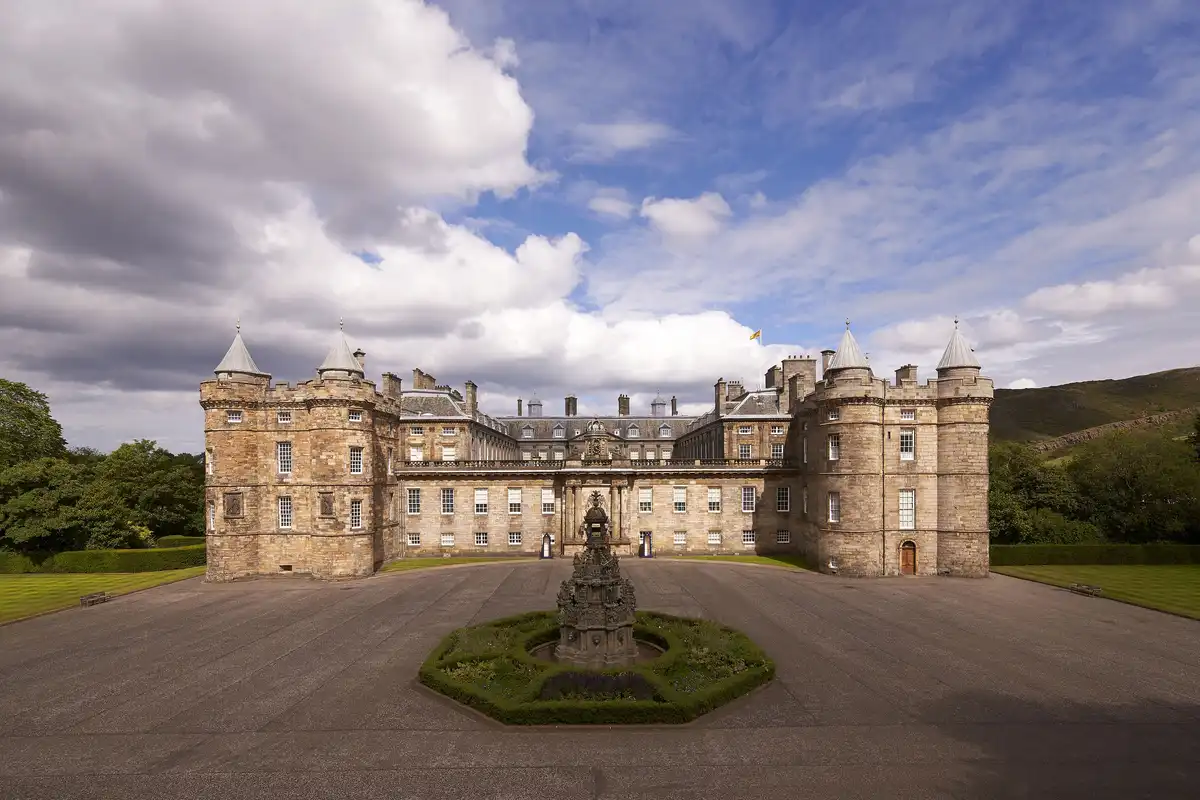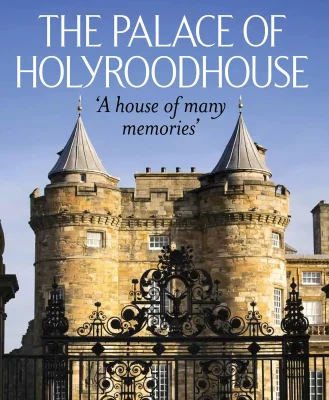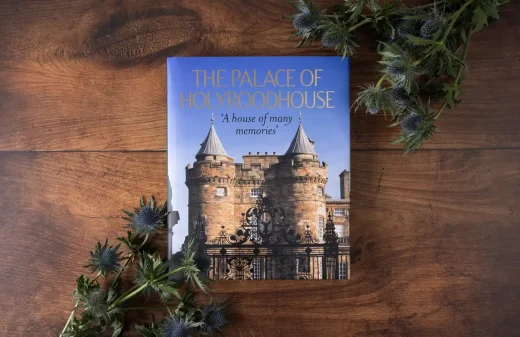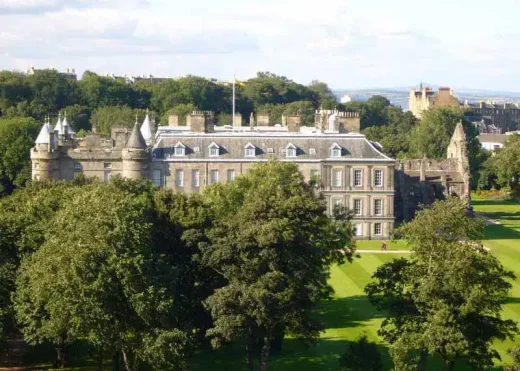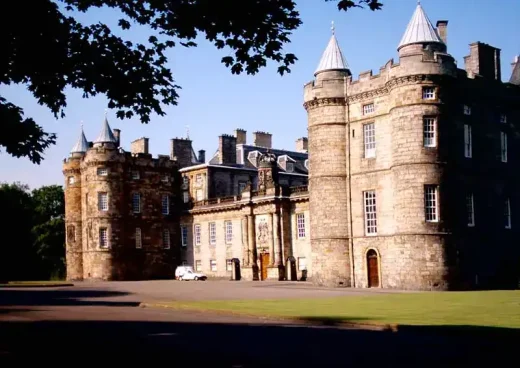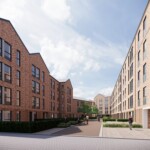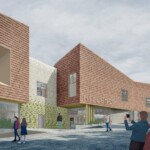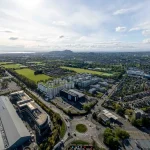Holyrood Palace Edinburgh pictures and history, Historic Scottish capital architecture images
Palace of Holyroodhouse Edinburgh : Architecture
Royal Building in the Old Town, Lothian, southeast Scotland, United Kingdom
10 October 2024
Palace of Holyroodhouse’s dramatic past revealed in first official history ever published:
Palace of Holyroodhouse Publication
As Edinburgh celebrates its 900th anniversary, a new publication reveals how the Palace of Holyroodhouse – the magnificent landmark in the heart of Edinburgh – has played an integral role in the unfolding history of the monarchy, the city and Scotland itself.
The Palace of Holyroodhouse: ‘A house of many memories’, published today (10 October) by Royal Collection Trust, is the most comprehensive history of Scotland’s royal palace produced in over 100 years.
Drawing on new research and primary sources, and richly illustrated with historical drawings, watercolours and photographs, the book chronicles the Palace’s journey from 12th-century abbey to official Scottish residence of His Majesty The King. It offers the most reliable accounts to date of the most infamous events in the Palace’s history, including the brutal murder of Mary, Queen of Scots’ secretary and Bonnie Prince Charlie’s occupation of Holyroodhouse for the Jacobite cause. The book also reveals some of the Palace’s more surprising occupants through the centuries – from a Russian princess and a penniless French King to a menagerie of lions and tigers.
The King’s Gallery, Palace of Holyroodhouse, Edinburgh:
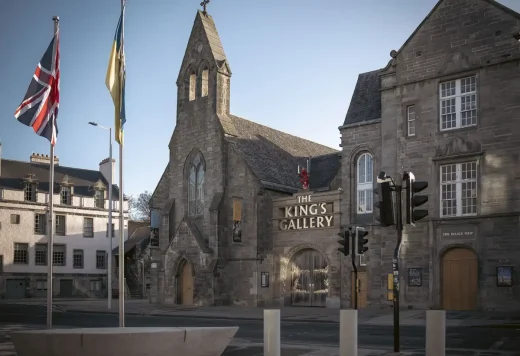
photo : Giulia Sansone
The Palace’s origins lie in the foundation of Holyrood Abbey nearly 900 years ago in 1128. In 1503 James IV converted its royal lodgings into a palace, which was expanded further by James V. Only the north-west tower from this early building survives, and the Abbey – once one of the finest medieval abbeys in Scotland – fell into ruin in the 1760s. However, a new reconstruction drawing – commissioned for the book using new research and GPS surveys – shows what James V’s lost Renaissance palace and Holyrood Abbey might have looked like for the first time.
Holyrood Abbey & Palace 1538:
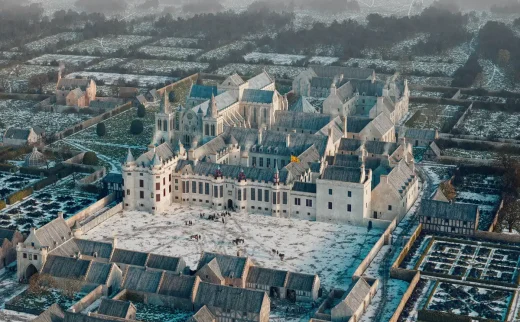
photo : Bob Marshall
Mary, Queen of Scots spent just six years at the Palace in the 1560s, but it was the setting for many of the important events of her reign, including two of her three marriages and the murder of her secretary, David Rizzio, stabbed more than 50 times by her jealous husband and his fellow nobles. Following a thorough reappraisal of contemporary sources, the book gives a detailed account of the murder as it unfolded in Mary’s chambers, watched in horror by the pregnant Queen.
Abbey Strand building:
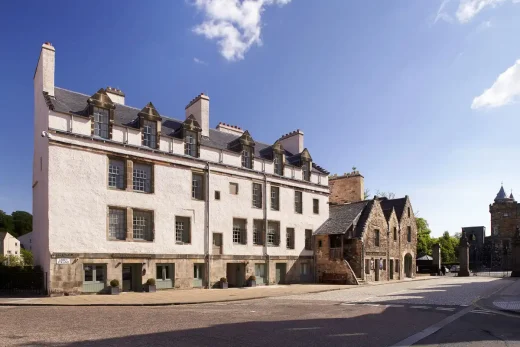
photo : Peter Smith
In 1745 Bonnie Prince Charlie occupied Edinburgh and held court at the Palace for six weeks during the final Jacobite rising. The glittering balls that he is said to have held inspired writers and artists such as Sir Walter Scott and Sir John Pettie for generations to come, but were not recorded in detail by contemporary sources. However, during research for the book, a letter came to light, written by the Duke of Perth in September 1745, confirming that a ‘great ball at ye palace’ had taken place two days after the Battle of Prestonpans, probably to celebrate the Jacobite victory. It is the only contemporary reference to a specific ball known to exist, confirming that these celebrations were not simply a later artistic invention.
Holyrood Abbey Edinburgh building:
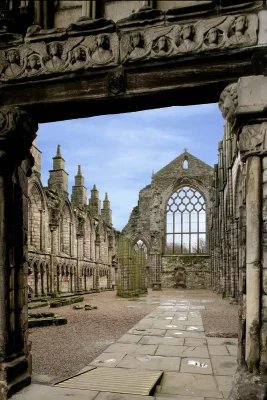
photo : Peter Smith
The book sheds light on the Palace’s role hosting foreign royalty in the 18th century. The Russian princess Ekaterina Romanovna Dashkova, a close friend of Catherine the Great, lived at Holyroodhouse between 1776 and 1779 while her son was educated in the city. She became an influential society figure, hosting weekly dances, and described her time at the Palace as ‘both the happiest and most peaceful that has ever fallen my lot in this world’. During the French Revolution, Marie Antoinette’s exiled brother-in-law, the comte d’Artois, lived at the Palace for seven years, using the Abbey’s status as a debtor’s sanctuary to avoid his creditors. His chaplain, valet, cook and other servants were also accommodated at the Palace, and he was soon joined by his sons and mistress. Following the restoration of the French monarchy, he later succeeded to the throne as Charles X, before being deposed and returning to Holyroodhouse for a further two years.
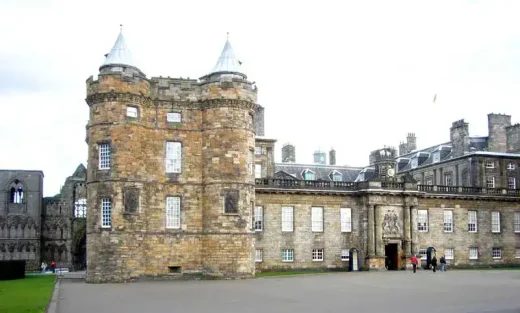
Royal Building in the Old Town photo © Adrian Welch
In 1822 George IV became the first reigning monarch to visit the Palace in almost 200 years. The book describes the elaborate preparations made by the visit’s organiser, Sir Walter Scott – from the demolition of an entire building to make way for the King’s procession up the Royal Mile, to the meticulous instructions given to those attending events at the Palace. Ladies were to wear ‘at least nine feathers’ in their headdresses, and must ‘exert their skill to move their trains as quietly and neatly’ as possible after meeting the King; a skill they should ‘lose no time in beginning to practise’.
Public interest in the Palace surged after George IV’s visit, and the book traces its centuries-long popularity with visitors, as well as its lasting influence on writers, artists and musicians. These include Daniel Defoe, Louis Daguerre (inventor of the first photographic process) and Felix Mendelssohn, whose Scottish Symphony was inspired by a twilight visit to the Abbey. Mendelssohn dedicated his symphony to Queen Victoria in 1842; the year the young Queen first saw the Palace.
Palace of Holyroodhouse:
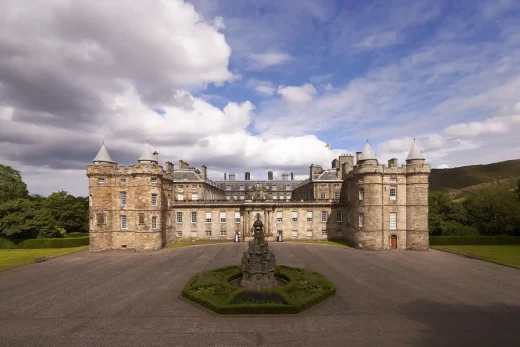
photo : Peter Smith
Queen Victoria felt a profound connection to Scotland and to Holyroodhouse, where she and Prince Albert would stay each year en-route to Balmoral Castle. The royal couple were captivated by the beauty of Holyrood Abbey, and the book reproduces sketches that they made of the ruined building from their windows, as well as watercolours of their apartments, commissioned by Queen Victoria after Prince Albert’s death to commemorate happier times.
Holyrood Abbey Edinburgh:
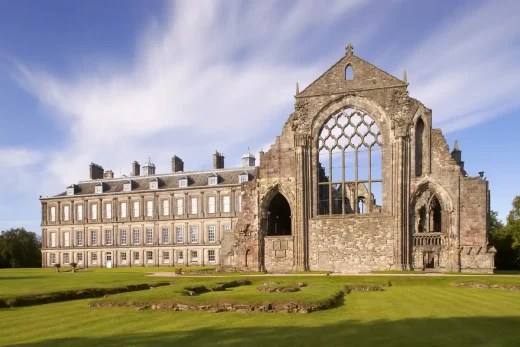
photo : Peter Smith
Extensive research into the Palace gardens sheds light on their varied uses through the centuries, from medieval jousting grounds and a royal menagerie, to the foundation in 1670 of one of Britain’s earliest botanic gardens, which later became the Royal Botanic Garden Edinburgh. The book also explores the colourful history of the nearby Abbey Strand buildings, thought to incorporate the oldest surviving house in Edinburgh. Now the Palace’s Learning Centre, the buildings once housed a weapon store, taverns, a brewery and even a brothel.
Holyroodhouse Gardens and Abbey:
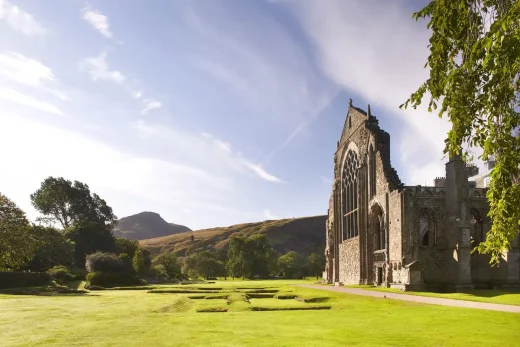
photo : Peter Smith
The Palace’s story is brought up to date with an exploration of its role in the 20th and 21st centuries, from its first garden party and a lucky escape from wartime bombing, to the opening of The Queen’s Gallery (now The King’s Gallery) in 2002 to show works of art from the Royal Collection, and the Palace’s continued popularity as a visitor attraction today, welcoming almost half a million people each year. The book recounts the moment the eyes of the world turned to Holyroodhouse in 2022, when Queen Elizabeth II lay at rest in the Throne Room after her death at Balmoral Castle, and describes the Royal Family’s use of the Palace today to celebrate Scots from all walks of life.
The Palace of Holyroodhouse: ‘A house of many memories’
Authored and edited by Deborah Clarke, with contributions from Richard Fawcett, Ailsa Hutton and Sally Goodsir.
ISBN 9781909741744
Hardback, 300 x 245mm, 288pp
Royal Collection Trust
Published 10 October, available at £55 from royalcollectionshop.co.uk and Royal Collection Trust shops, and all good bookshops.
Royal Collection Trust, a department of the Royal Household, is responsible for the care of the Royal Collection and manages the public opening of the official residences of The King. Income generated from admissions and from associated commercial activities contributes directly to The Royal Collection Trust, a registered charity. The aims of The Trust are the care and conservation of the Royal Collection, and the promotion of access and enjoyment through exhibitions, publications, loans and educational programmes.
Holyroodhouse Gardens and Abbey:
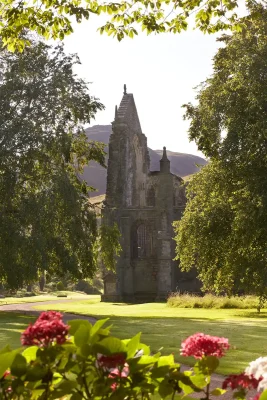
photo : Peter Smith
The Royal Collection is among the largest and most important art collections in the world, and one of the last great European royal collections to remain intact. It comprises almost all aspects of the fine and decorative arts, and is spread among some 15 royal residences and former residences across the UK, most of which are regularly open to the public. The Royal Collection is held in trust by the Sovereign for his successors and the nation, and is not owned by The King as a private individual.
The Palace of Holyroodhouse stands at the end of Edinburgh’s Royal Mile and is the official residence of The King in Scotland, used by His Majesty and the Royal Family for State ceremonies and official entertaining. It is open to the public year-round and a visit to the Palace includes the opportunity to explore the ruins of Holyrood Abbey and the Palace’s gardens, which are set against the spectacular backdrop of Arthur’s Seat.
Previously on Edinburgh Architecture:
post updated 18 November 2023
Palace of Holyroodhouse Edinburgh is one of the royal family’s residences in Scotland. The other is Balmoral Castle in Royal Deeside, north east Scotland.
Historic Scottish Capital Architecture photo © Adrian Welch
Holyrood Palace Edinburgh

Histric Scottish Capital Architecture image © Adrian Welch
This royal residence is located at the east end of the Scottish capital city’s Old Town. It is sited in Canongate, a historic neighbourhood of Edinburgh, next to the expansive Holyrood Park. The stately home is open to the public, but visitors cannot access when the royal family is in residence, which is typically one or two times a year.
Located at the bottom of the Royal Mile in Edinburgh, Holyroodhouse has served as the principal royal residence in Scotland since the 16th century, and is a setting for state occasions and official entertaining.
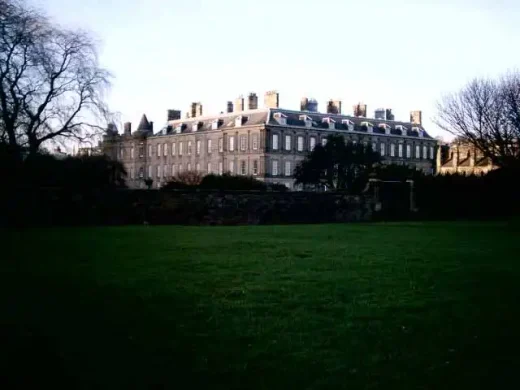
Old Town building photo © Adrian Welch, 27 September 2007
The current Palace of Holyroodhouse was designed by Sir William Bruce and built between 1671 and 1678, with the exception of the 16th-century north-west tower built by James V. The palace is laid out round a central, classical-style three-storey plus attic quadrangle layout. The property extends approximately 230 feet (70 m) from north to south and 230 feet (70 m) from east to west.
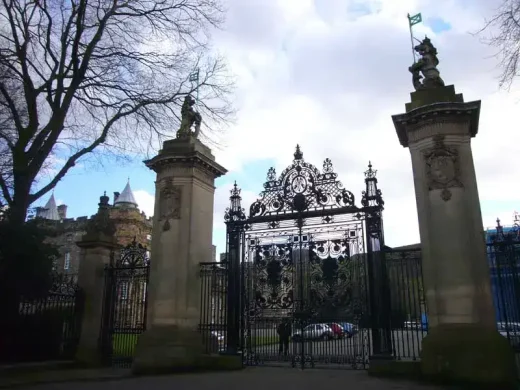
Royal Building in the Old Town photo © Adrian Welch
The 16th-century north-west tower is balanced with a matching south-west tower, each with a pair of circular angle turrets with ball-finialled, conical bell-cast roofs. The towers are linked by a recessed two-storey front, with the central principal entrance framed by giant Doric columns and surmounted by the carved Royal arms of Scotland. Above the arms a crowned cupola with a clock rises behind a broken pediment supported by dolphins, on which are two reclining figures.
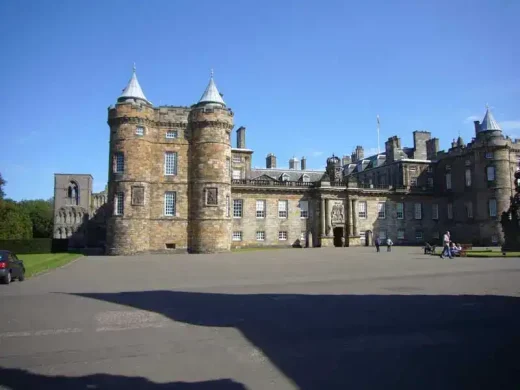
Royal Building in the Old Town photo © Adrian Welch 2007 taken with lumix camera
The north and south fronts have symmetrical three-storey facades that rise behind to far left and right of the two-storey west front with regular arrangement of bays. General repairs were completed by the architect Robert Reid between 1824 and 1834 that included the partial rebuilding of the south-west corner tower and refacing of the entire south front in ashlar to match that of the east.
source: wikipedia
Palace of Holyroodhouse – context: Edinburgh Old Town
Buckingham Palace – London
Edinburgh Old Town Building Designs
Edinburgh Old Town Property Designs – recent Scottish Capital city architectural selection below:
Building adjacent to The Palace of Holyroodhouse:
Scottish Parliament
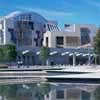
picture © Keith Hunter
Queens Gallery
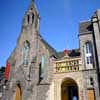
image © Adrian Welch
Dynamic Earth
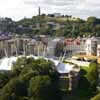
photo © Adrian Welch
Scottish Capital Building Designs
Scottish Capital Property Designs – recent architectural selection below:
Jenners
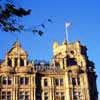
photo © Adrian Welch
Edinburgh Castle
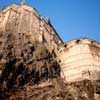
picture © Adrian Welch
Edinburgh Playhouse
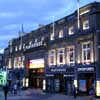
image © Adrian Welch
Comments / photos for the Palace of Holyroodhouse Edinburgh, in southeast Scotland, United Kingdom, page welcome
